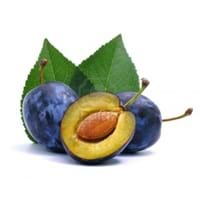Health Benefits
Cancer prevention, Cures gastro-intestinal troubles, Heart care, Increase in haemoglobin, Prevents high blood pressure
Asthma treatment, Bronchitis treatment, Cancer prevention, Heart care, Increases metabolic rate
General Benefits
Anti-inflammatory properties, Boosts immune system, Digestive aid, Eye care, Flu treatment, Helps in weight loss, Maintains healthy cholesterol level, Treatment of common cold
Anti-inflammatory properties, Controls blood pressure, Digestive aid, Eye care, Healing of wounds, Maintains healthy cholesterol level, Strengthens bones, Treatment of sinusitis, Treatment of common cold
Skin Benefits
Anti-aging benefits, Brightens and lightens complexion, Reduces wrinkles, Skin revitalization, Treatment of dark spots
Anti-aging benefits, Brightens and lightens complexion, Skin cleansing, Treatment of acne, Treatment of dark spots
Hair Benefits
Prevents hair loss, Promotes longer and healthier hair, Protects hair, Remedy for split ends, Treatment of dandruff
Prevents hair loss
Allergy Symptoms
Abdominal pains, Anaphylaxis, Vomiting
Abdominal pains, Itching in tongue and other parts of mouth, Sneezing, Swelling, Tingling sensation in wrist and face, Vomiting, Wheezing
Side Effects
Allergic reaction
Causes swollen mouth, Allergic reaction, Diarrhoea, Nausea, Skin rash, Vomiting
Best Time to Eat
As a snack in the late afternoon, Don't consume at night and before bed, Don't eat after meal, Morning time (before lunch)
Best if taken as a breakfast (or empty stomach), As a snack in the late afternoon, Eat the fresh ones, avoid mixing with any other foods, don't eat after meal., Morning time (before lunch)
Vitamin B5 (Pantothenic Acid)
Vitamin C (Ascorbic Acid)
Vitamin K (Phyllochinone)
Calories in Fresh Fruit with Peel
Not Available
Calories in Fresh Fruit without Peel
Not Available
Type
Tree fruit
Berry, Tropical
Varieties
Merryweather Damson, Shropshire Prune, President plum, Damson farleigh and Damson langley bullace
Smooth Cayenne, Abacaxi, Red Spanish and Queen
Inside Color
Yellow
Yellow
Taste
Juicy, Sweet, Tart
Strong, Sweet, Tart
Origin
Syria
Central America, South America
Grows on
Trees
Not Available
Soil Type
Clay, Loam, Moist, Sandy loam, Well-drained
Clay, Sandy loam, Well-drained
Climatic Conditions
Cold
Hot, Sunny
Facts about
- The name Damson originates from the original name 'Damacus plum'.
- Damson wine was very popular in 19th century.
- This fruit is often used in jams due to its slightly tart behaviour.
- A single pineapple takes 3 years to reach maturation.
- Pineapple is not an apple, but is actually a berry.
- The name is with reference to its resemblance to pine cones.
- Pineapple is sweeter if scales are more.
Top Producer
United Kingdom
Costa Rica
Other Countries
Ireland, United States of America
Brazil, India, Philippines, Thailand
Top Importer
United States of America
United States of America
Top Exporter
France
Costa Rica
Botanical Name
Prunus domestica subsp. insititia
Ananas comosus
Synonym
Not Available
Ananas sativus
Subkingdom
Tracheobionta
Tracheobionta
Division
Magnoliophyta
Magnoliophyta
Class
Magnoliopsida
Liliopsida
Subclass
Rosidae
Commelinidae
Family
Rosaceae
Bromeliaceae
Species
Prunus domestica subsp. insititia
A. comosus
Generic Group
Not Available
Pineapple
Difference Between Damson and Pineapple
We might think that Damson and Pineapple are similar with respect to nutritional value and health benefits. But the nutrient content of both fruits is different. Damson and Pineapple Facts such as their taste, shape, color, and size are also distinct. The difference between Damson and Pineapple is explained here.
The amount of calories in 100 gm of fresh Damson and Pineapple with peel is 46.00 kcal and Not Available and the amount of calories without peel is Not Available and 50.00 kcal respectively. Thus, Damson and Pineapple belong to Low Calorie Fruits and Low Calorie Fruits category.These fruits might or might not differ with respect to their scientific classification. The order of Damson and Pineapple is Rosales and Poales respectively. Damson belongs to Rosaceae family and Pineapple belongs to Bromeliaceae family. Damson belongs to Prunus genus of Prunus domestica subsp. insititia species and Pineapple belongs to Ananas genus of A. comosus species. Beings plants, both fruits belong to Plantae Kingdom.









